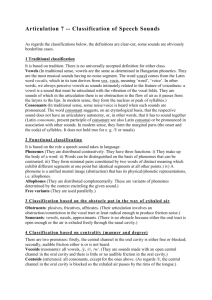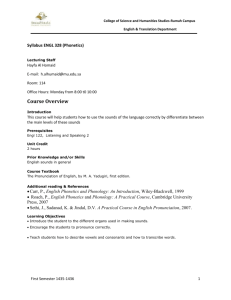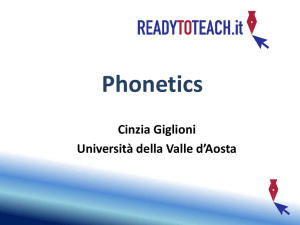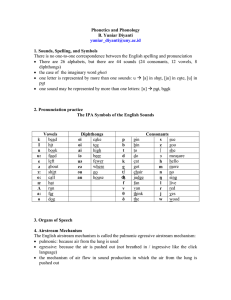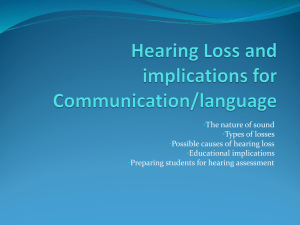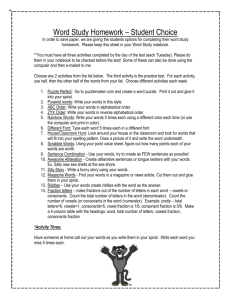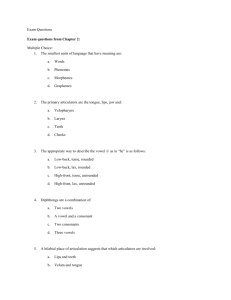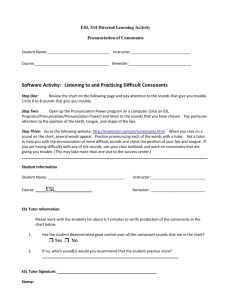English Phonetics and Phonology
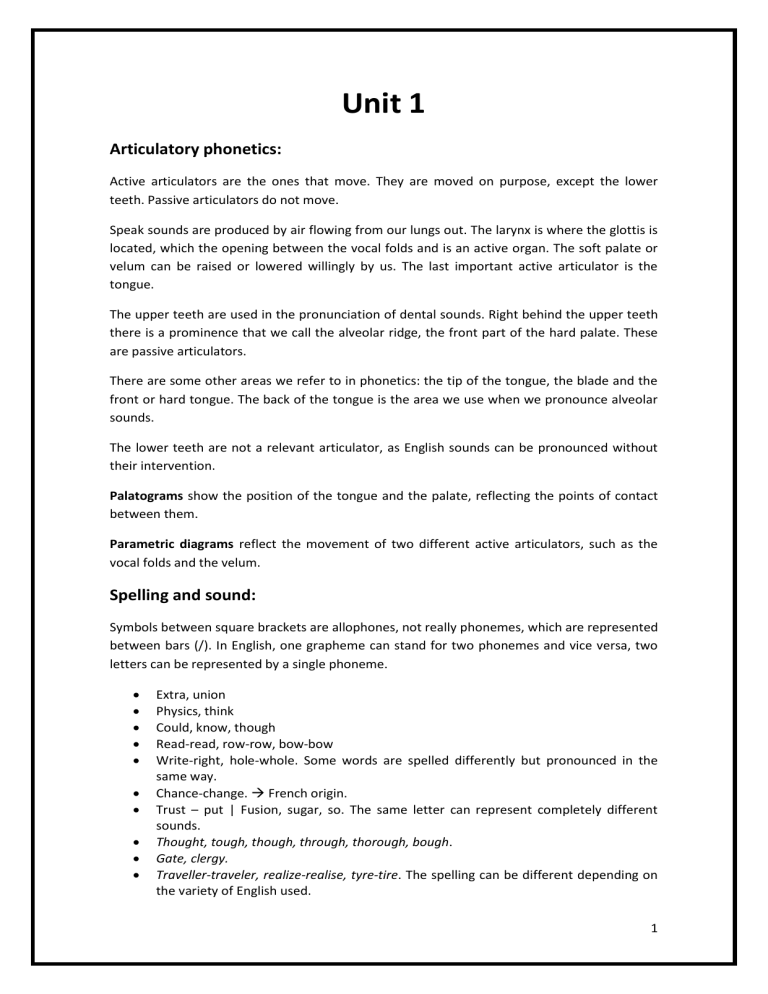
Unit 1
Articulatory phonetics:
Active articulators are the ones that move. They are moved on purpose, except the lower teeth. Passive articulators do not move.
Speak sounds are produced by air flowing from our lungs out. The larynx is where the glottis is located, which the opening between the vocal folds and is an active organ. The soft palate or velum can be raised or lowered willingly by us. The last important active articulator is the tongue.
The upper teeth are used in the pronunciation of dental sounds. Right behind the upper teeth there is a prominence that we call the alveolar ridge, the front part of the hard palate. These are passive articulators.
There are some other areas we refer to in phonetics: the tip of the tongue, the blade and the front or hard tongue. The back of the tongue is the area we use when we pronounce alveolar sounds.
The lower teeth are not a relevant articulator, as English sounds can be pronounced without their intervention.
Palatograms show the position of the tongue and the palate, reflecting the points of contact between them.
Parametric diagrams reflect the movement of two different active articulators, such as the vocal folds and the velum.
Spelling and sound:
Symbols between square brackets are allophones, not really phonemes, which are represented between bars (/). In English, one grapheme can stand for two phonemes and vice versa, two letters can be represented by a single phoneme.
Extra, union
Physics, think
Could, know, though
Read-read, row-row, bow-bow
Write-right, hole-whole. Some words are spelled differently but pronounced in the same way.
Chance-change. French origin.
Trust – put | Fusion, sugar, so. The same letter can represent completely different sounds.
Thought, tough, though, through, thorough, bough.
Gate, clergy.
Traveller-traveler, realize-realise, tyre-tire. The spelling can be different depending on the variety of English used.
1
Gonna, wanna, gotcha, thru are really common, informal ways of pronouncing the standard words.
Arkansas, Illinois, Greenwich, Leicester, Gloucester, Leominster.
IPA Alphabet.
RP consonants:
2
IPA Cardinal Vowels:
RP Vowels:
3
Diacritics:
Segment elements:
Phonemes, syllables, feet, words, breath groups, etc.
Allophones:
Different articulations of the same phoneme, depending on their sound environment and its social or geographical variation:
Phonemic transcription: /ta ɪd/
Phonetic (allophonic or narrow) transcription.
4
Phonemic system:
Each language has its own phonemic system. In Spanish, there is no difference between / ɳ - n/ or /ɪ - i:/. Many speakers in the south of Spain and Latin American don’t make any difference between /s – z/.
Phonotactic rules:
Difference languages and dialects have also differences in some phonotactic rules.
In English, /ɳ/ is never found initially, and / ʌ - æ-ʊ / never occur in open syllables. In Spanish, there is no initial /sk/ or /sp/
The study of the possible locations and combinations of sounds in each language is known as phonotactic.
Consonants:
Functional definition: they need a vowel to form a syllable (but bottle, button ?).
Articulatory definition: they are produced through friction or closure of organs (but told, every
?).
Clusters:
Groups of consonants (up to 4 in RP) which are together in the same syllable (texts).
Speech organs:
5
Front vowels:
Vowels:
Functional definition: they don’t need a consonant to form a syllable. However, sometimes consonants can also form syllables by themselves.
Articulatory definition: they involve no friction or closure (constriction) in their production.
RP diphthongs:
Closing: /a ɪ / /e ɪ / / ɔ ɪ / - /əʊ/ /aʊ/
/a ɪ /: might, by, tie, my.
/e ɪ /: mate, came, wait.
/ ɔ ɪ /: boy, oil.
/əʊ/: boat, coast, bone.
/aʊ/: now, how, found
RP triphthongs:
/a ɪ ə/ /ɔ ɪ ə/ /e ɪ ə/ / aʊə/ /əʊə/
Centring: / ɪ ə/ /eə/ /ʊə/
/ ɪ ə/: here, beer, tear
/eə/: square
/ʊə/: poor, sure
Approximants (or “frictionless continuants”)
/j/ /w/ /r/ /l/ are functionally consonants (they need a vowel to form a syllable) but they are vowels (vocoids) from the viewpoint of articulation (the involve no closure or friction of the organs). Glides are transitions from one vocalic quality to another.
6



